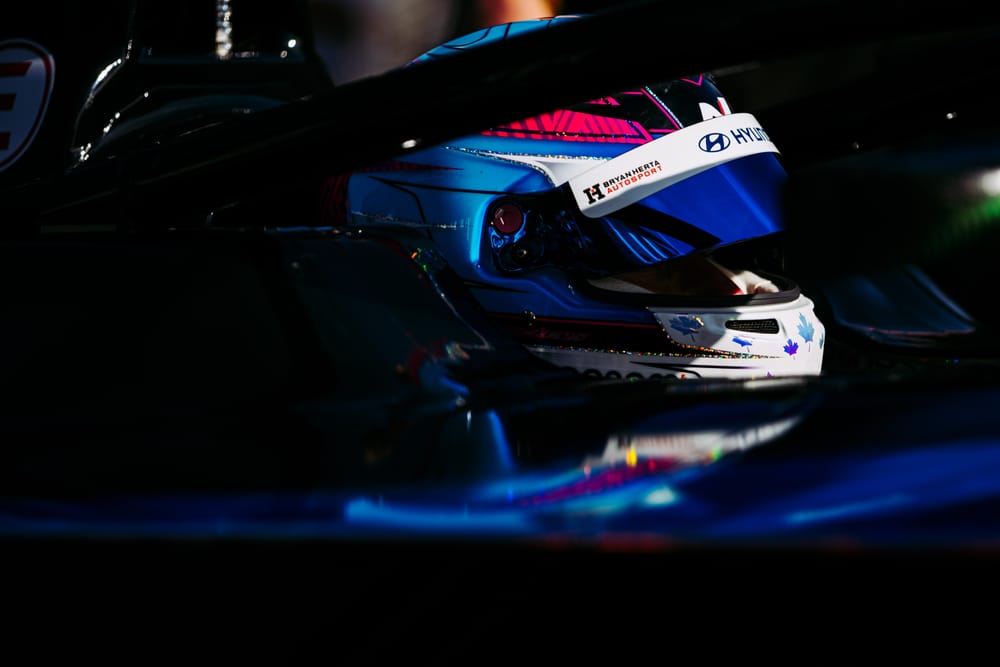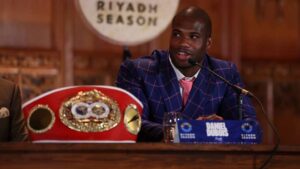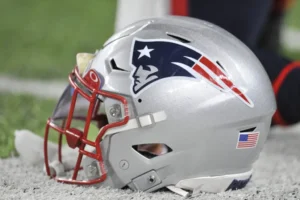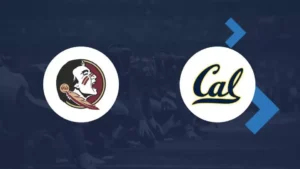
“I want a team to sign me because I’m their best option to get results, not because I’m the disabled guy.”
Robert Wickens will always remember August 19, 2018 as the date that altered his life.
A solid junior category career, including a Formula Renault 3.5 title, led to a race-winning Mercedes DTM stint, but it was his 2018 full-season call-up to IndyCar with what was then Schmidt Peterson Motorsports that appeared to be the catalyst for the rest of his career.
The accident at Pocono Raceway that rendered him paraplegic was unquestionably terrible. However, Wickens’ desire to be a racing driver remained constant.
After four years of physiotherapy and working with teams, he made his full-time return as a professional driver in 2022, with a full-season seat in the Michelin Pilot Challenge provided by Bryan Herta Autosport.
A year later, he and teammate Harry Gottsacker won the TCR category drivers’ championship, proving that, despite the accident, Wickens’ natural speed and aptitude behind the wheel had not diminished.
Wickens is eager to continue demonstrating it to the world, with his sights set on earning a Formula E seat in the near future.
Wickens spoke with The Race in June about his handful of laps in an adapted Gen3 vehicle, which he described as “never an exhibition”.
“Frankly, I’m too old and impatient to do something for fun anymore,” remarked the 35-year-old. “I feel like I’m doing everything with my career for a purpose and here it is no different.”
Wickens’ time in the automobile was brief, but it left him wanting more. It’s a plan that has the support of Jeff Dodds, CEO of Formula E.
Giving equal opportunities to a varied spectrum of ability is a matter near to Dodds’ heart. He is the chair of the ‘Valuable 500′, a non-profit organization dedicated to reducing disability exclusion.
“Robert’s spirit is remarkable and he’s got bags of talent that he is using to continue a career he loves,” Dodds told the publication.
“What I want to see today and in the future is drivers like Robert competing on merit at the highest level of racing. Inclusive sport is essential for me. These stories are so human and motivating that they should be recounted and continued.
“This is more than just a fun run. It’s part of something, and Robert has the tenacity to do something great with this car and possibly future models. “It is exciting.”
Wickens entered the laps at Portland thinking precisely the same as Dodds. Apart from catching up with old opponents such as Antonio Felix da Costa and Jean-Eric Vergne, whom he defeated to win the 2011 Formula Renault 3.5 series title, Wickens was entirely focused on what he’d be doing on track during Formula E Operations’ laps.
“I want to use this as an evaluation as a career opportunity,” he informed me.
“Come November, when Formula E is doing the rookie tests in Valencia, hopefully I’m considered with any of the teams on the grid to get an equal shot at a race seat to anyone else they’re evaluating.”
Wickens has been seeking for a series to race in since his return to competitive racing, although Formula E had always been on his radar prior to 2018.
The elite level of the electric series, which is only expanding as more manufacturers commit to Gen4 and the four-year generation cycle that will last until 2030, has long pleased the Canadian.
“It’s unique in its own ways,” Wickens said. “But the competition is fierce, as seen by the small number of repeat champions. It’s what I enjoy.
“On any given weekend, every driver in any car has a good chance of winning, so it’s something I’ve always kept an eye on.
“I find it intriguing; I enjoy the strategy of how drivers must manage everything, with the support of the team, of course, but it is entirely up to the drivers to conduct their race and plan it ahead of time.
“You’re never just in the moment, you’re constantly thinking ahead, which is something that I felt like I’ve always done quite well in my career.”
Wickens’ Portland adventure was not his first time driving a Formula E car. Toto and Susie Wolff brought him to Venturi in 2020 to test a customized simulator that transferred the throttle and brake pedals to the steering wheel, similar to what he races in the Michelin Pilot Challenge.
“I went over to Monaco; I think I did three-to-four days on the sim and just got to know a Formula E car from a virtual perspective,” he told me.
“For me, getting them as competitive as possible with the hand controls, the systems we built for quali power, and so on was a bit of a struggle, but once we got into racing sims and it came down to energy management, I was actually quite competitive.
“It was the braking feel; what we used to create the brake was paddles like the ones we’re using here, but getting feedback on where the threshold was on the brake was based on muscle memory and the travel of the paddle rather than the hydraulic resistance that an able-bodied person would feel with their foot.





